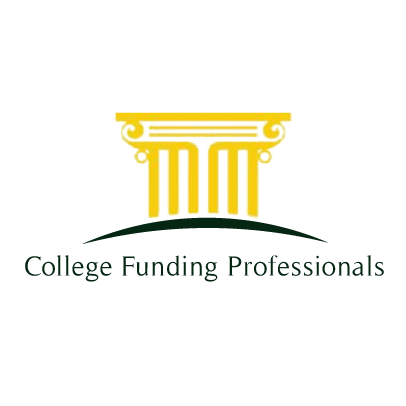Across the country, 34% of students are awarded a Pell Grant. More than half of these funds are provided to students with an annual income of less than $20,000.
It’s important to understand as much about these grants as possible, as they can significantly offset the cost of college or university tuition. Seeing as the average cost of college tuition in the United States is just under $37,000, it’s important to have as much information as possible.
If you’re interested in applying for financial aid, you’re probably wondering, “Will I qualify for a Pell Grant?” You might also wonder, “Do federal Pell Grants have to be paid back?” This allows you to plan for tuition repayment once you graduate.
This helpful article tackles all these questions and more.
What Is a Pell Grant?
Pell Grants provide low-income households with federal grant funding. This amount changes every year.
“Is there any free grant money?” is a common question among students and parents. Pell Grants are an example of free grant money for qualifying students.
It’s also common to ask, “Does the Pell Grant have to be repaid?” No, these federal grants don’t have to be paid back, with certain stipulations.
How to Receive Federal Grants
To apply for a Pell Grant, begin by completing the Free Application for Federal Student Aid (FAFSA). You’ll need your driver’s license, social security number, or Alien Registration Card if you have one of the above. You’ll also need a list of institutions you want to attend, along with all applicable tax records for you and your family.
Once you complete your application and submit it, your college or university will decide if you’re eligible for a Pell Grant. Qualification for Pell Grants is considered whenever you complete a FAFSA application, so don’t forget to do this as soon as possible.
However, Pell Grants aren’t first come first serve, so if you qualify, there will be funds for you.
When you complete your annual FAFSA application, you’ll automatically be considered for a Pell Grant. Keep in mind that it’s possible to qualify for this grant one year but not the next, especially if your — or your family’s — finances change.
It’s also important to understand that Pell Grants have a threshold. Students can receive a Pell Grant for about six academic years or 12 semesters.
Do you have to pay the Pell Grant back if you don’t have a certain GPA? No. Your grades don’t have anything to do with this type of federal grant, as it’s strictly based on need and income.
Am I Eligible for a Federal Pell Grant?
A common question among students and parents is, “Do I qualify for the Pell Grant?”
A student receives a Pell Grant based on several items. For example, a student’s Expected Family Contribution (EFC), or Student Aid Index (SAI), is used to determine a student’s eligibility. Once a student completes the FAFSA, the information will be used to determine their financial aid need.
For the most part, only students obtaining their first undergraduate degree can qualify for a Pell Grant. Any qualifying student taking fewer than 12 credits per semester may receive a prorated Pell Grant.
If attending multiple colleges or universities, only one Pell Grant may be awarded to a student at once. Additionally, Pell Grant amounts are subject to change annually with congressional appropriations.
For the 2023-2024 school year, Pell Grants could not exceed an annual amount of $7,395. And, to reiterate the answer to the question, “Do you have to repay a federal Pell Grant?” The answer is “No.”
Does a Federal Pell Grant Have to Be Paid Back?
Although Pell Grants don’t have to be repaid, there are certain circumstances where you would have to. For example, if a student changes their enrollment status after receiving funds from a Pell Grant, they may have to repay it. The same holds true if a student withdraws from courses after receiving these federal funds.
Do you have to pay back federal student aid? That depends.
Once you complete your FAFSA, you’ll learn about the type of financial aid you qualify for. If you receive scholarships, grants, or money from work-study, you won’t have to repay it. However, any Direct PLUS federal loans have to be repaid.
Other Types of Financial Aid
If you don’t qualify for a Pell Grant — or if the amount isn’t enough to cover tuition — you can always look into alternative types of financial aid.
For example, you can apply for scholarships. Some schools require students to complete the FAFSA to be considered for scholarships, while others don’t. If you need financial aid, however, you’ll have to complete the FAFSA.
You can also look into work-study opportunities to help offset the cost of tuition.
The Federal Work-Study Program provides part-time jobs to students. Their pay is at least the current federal minimum wage, but there are opportunities for making additional funds. This program takes your needs, your school’s tuition, and when you apply into consideration, which can affect your earning potential for the better.
Although you can apply for a job outside of the Federal Work-Study Program, they might not be as flexible as traditional work-study opportunities. You might have to work longer hours, plus you’ll be off-campus, which can conflict with your course schedule. Additionally, any money you make working a part-time job can affect how much financial aid you receive, such as future Pell Grants.
Am I Eligible for a Pell Grant?
Do you have to pay the federal Pell Grant back? No, with exceptions. If you withdraw from one of your classes or change your enrollment status, you may need to repay your Pell Grant. Always speak with your college or university about this, so you understand exactly what’s expected of you.
You can also reach out to College Funding Professionals. We offer expert advice to parents and students as they apply to college. Join our free online Facebook Group to gain access to the best college planning advice anywhere.



